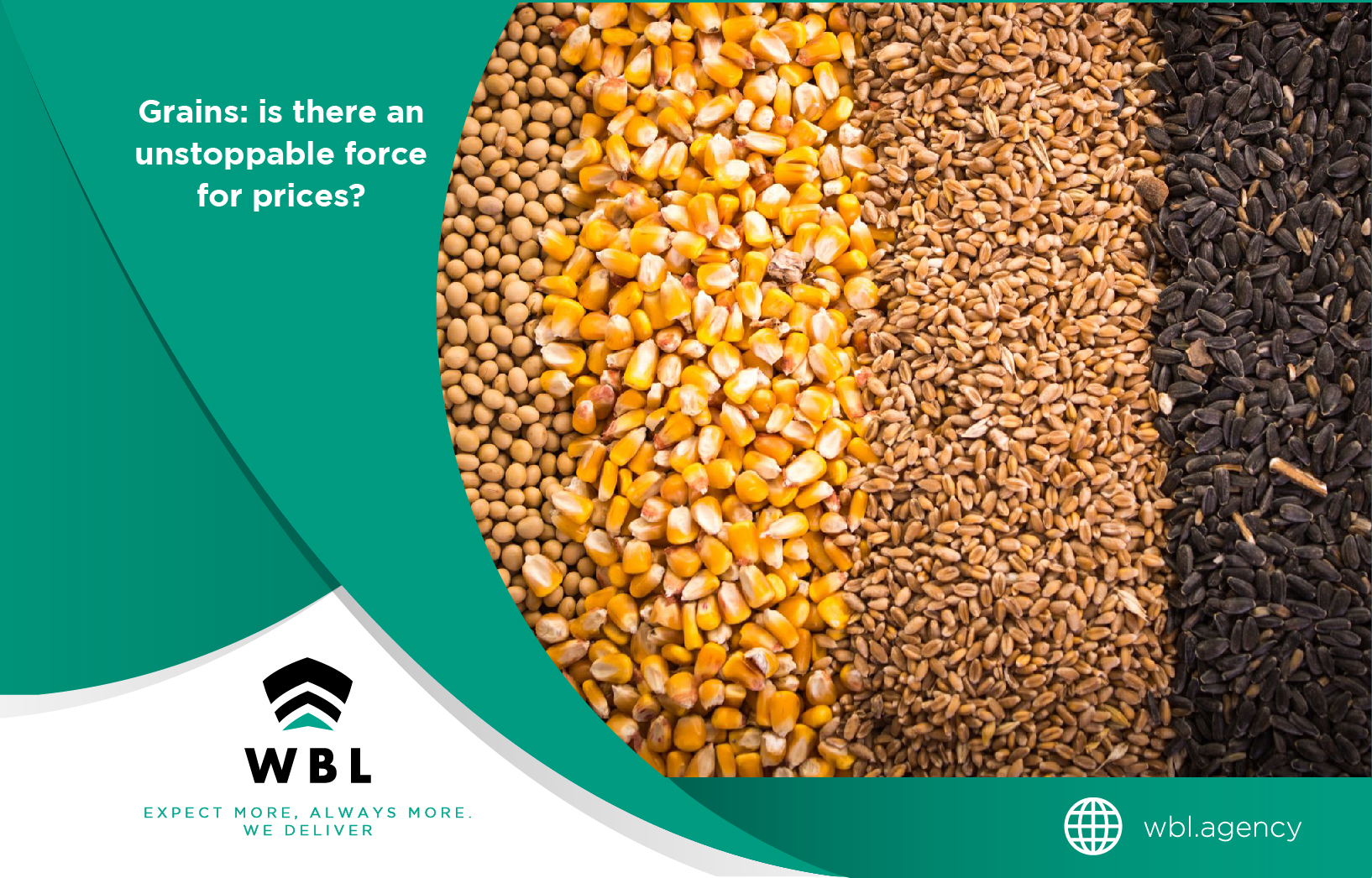Grains: Is there an unstoppable force for prices?
Pandemic, oil price war, long and endless quarantines, an entire world in recession, elections in the United States, Covid-19 and news of saving vaccines that so far do not give us an accurate picture either.
In the middle of all this “apocalyptic” panorama, China rampaged buying “all kinds of food”. To be short, we already know the result for the grains.
Maize in the international market went from having no bullish elements until August 12 to a non-stop rising since then.
Better luck had the local maize, which hit a low at the end of May and never stopped rising since then. So we arrive at Maize available at around $ 195 per ton with Chicago $ 30 below.
If we go to SB, the local trend was the same as in Chicago but also with much higher performance. From the low of the year, Matba-Rofex available SB gained US $ 138 (65%), while in Chicago the increase was also huge but much less (US $ 113 or 36%).
Throughout this price movement, at the end of April, producers had a price of 23% of the 19/20 crop vs 15% of the cycle prior to the same date, while on November 4, according to the Ministry of Agriculture, they accumulate 28 million with the price (57%) vs 35 million (64%) of the previous cycle.

Of course, there are two elements to consider here, the main one is that in the previous cycle the SB crop was around 55 million tons (almost the same difference in volume with price between one year and the other) and, ultimately, if we take the merchandise without a price on the same date would remain 21 million tons vs 20 million tons that remained in 2019.
While SB is on the podium today, maize at the local level took the medal for many months. From the low, in May it gained US $ 78 (67%) while Chicago, when it reactivated as of August 13, gained US $ 32 (26%).
The price relationship between corn and soybeans, especially until July / August, favored corn sales and as of November 4, we have reached 36.2 million tons with price (very close to the 2019 level).
When looking at the data from the other side, without a price, considering 51.5 million tons of production (Buenos Aires Cereal Stock Exchange), only 14 million would remain in the hands of producers (which have not been delivered to be fixed) only 10.5 would remain. In short, with no price as of November 4, there were 14 million tons of corn and 21 million tons of soybeans left.
Beyond analyzing the price increases we saw, the differences we have today vs what we had last year on the same date (US $ 144 for available corn and SB US $ 255) seems very difficult for those who have not sold until now, (who surely has already covered previous commitments, bought supplies for 2021, and some for 2022, etc.) decide to sell with a market that each week adds between 10-15 dollars on average, corrects, but the following week exceeds previous maximums. When, on the other hand, the economic and exchange uncertainty in Argentina, if it is always “uncertain”, is even more so in a pandemic and especially as we are just next by December.
It seems that it will be very difficult for those who have not yet sold to do so in the next two months when a climate risk is also added to start 2021.
In maize, if we consider the local balance, it also seems “almost” impossible for it to change its trend and begin to fall. But, in this case, we know that there is an important local component to take into account.
For several months now, the values of maize have put the numbers of other activities that use it as a raw material in red. Transferring these increases to the final consumer is almost an impossible mission in the current economic context. And then the great doubt “local risk” is if the Government is going to leave the game of free supply and demand until the new crop enters, or if they can somehow “intercede” (not to speak of intervention) so that prices do not continue to grow.
WBL Shipping Agency
For more news follow us on LinkedIn
